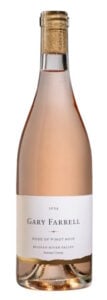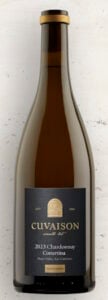
By Tom Marquardt And Patrick Darr
Unlike in many European countries, winemaking in Australia is not ancient. Since its inception in the mid-1800s, the country’s wine industry has endured many ups and downs. The development of a significant export market in the late 20th century brought more competition for inexpensive wine in the United States. Wildfires led to widespread losses in 2019 and 2020. Then, in 2020 the Chinese government slapped a 200 percent tariff on Australian wines, supposedly in retaliation for Australia’s support for tracing the corona virus to China. That tariff was lifted last year, but the turmoil caused further damage to a struggling market.
Customer palates were also changing during this period. Many Americans associate Australian wines with a bold fruity style of wine that features what some may consider an overly ripe drink that is modified by the addition of tartaric acid in an attempt to balance the wine. Sometimes the wines have been called “critter wines” due to the proliferation of indigenous Australian animals on their labels. Think Yellowtail and Little Penguin. And many Australian wines were sold in supermarkets at bargain prices with the style and prices appealing to Americans that had just graduated from the sugary white zinfandels.
In recent years, however, Americans have been drinking less alcohol, and their preferences are for less extracted, more elegant wines. With that, the demand for Australian wines has waned.

Through all of this turmoil, Australia’s Penfolds wines have survived. Penfolds is one of Australia’s oldest wineries, founded in 1844, and has consistently marketed wines that please the palate at reasonable prices. Penfolds produces and identifies a series of “bin wines” that are generally easy to source. It markets a California collection and an Australian collection that use grapes from these areas. We recently tasted two examples from the Australian collection and were impressed with the quality of both examples. Following are our impressions:
Penfolds Bin28 South Australia Shiraz 2021 ($30-40). This is a bold fruit forward style of shiraz with bright pure blackberry fruit and just a hint of oak. It would be great by itself or with a barbecued steak.
Penfolds Bin 389 Cabernet Sauvignon/Shiraz South Australia 2021 ($70-80). Cherry berry nose. In the mouth the cabernet sauvignon brings a note of cassis to pair with the plum notes and a whiff of oak. Best paired with food.
Gary Farrell Winery
Gary Farrell built his reputation producing pinot noir and chardonnay in the 1970s for several Sonoma County wineries, including Davis Bynum Winery. He released his first vintage under his name in 1982 and produced wine under his name until 2004 when he

sold his brand to Allied Domecq. Since then, a group of investors led by Bill Price, managing partner of Kistler Vineyards as well as owner of Three Sticks and The Adobe, has purchased Gary Farrell Winery.
We recently sampled three of their current releases.
Gary Farrell Rosé of Pinot Noir Russian River Valley 2024 ($45). A somewhat tart and lean rosé that would pair well with appetizers, especially a charcuterie tray. Light pale in color with cherry and citrus elements, this is a very pleasant wine and easy to drink.
Gary Farrell Pinot Noir Sonoma Coast Sonoma County 2023 ($50). This pinot noir is very balanced with cherry and red raspberry notes and a light deft touch of oak.
Gary Farrell Pinot Noir Russian River Valley Rochioli Vineyard 2022 ($105). This is a very elegant deep pinot noir with concentrated ripe cherry notes with a hint of spice. Elegant and complete. Rochioli Vineyard is the source of Gary Farrell’s first vintage in 1982.
Special rosés
Gassier Cotes de Provence 2024 ($25). This is a very fruit-forward, delightful blend of grenache, cinsault, syrah and vermentino. Generous peach and citrus notes.

Frank Family Leslie Rosé 2024 ($50). Made entirely of pinot noir grapes, this exquisite rosé has fresh acidity balanced with abundant peach, guava, strawberry and citrus notes. Long and intense finish, it’s a great wine. Fifteen percent of the sales of this wine will go to the non-profit Dress for Success, which provides professional attire to unemployed or underemployed women.
Marques de Caceres Rioja Rosado 2024 ($10). What a great deal. This tempranillo has bright, forward watermelon and strawberry flavors with good acidity to embrace warm temperatures.
The Pale by Sacha Lichine 2024 ($15). This is a terrific value from the esteemed Sacha Lichine. Light in color, as the name suggests, is very expressive with pink grapefruit and peach notes. The blend is grenache, cinsault, syrah and rolle.
Scaia Rosato Veneto 2024 ($15). This is unusual in that it is made entirely from the native rondinella grapes. What a steal! Lots of fresh red berry fruit and citrus notes with a hint of white peach.
Wine picks

Rhys Vineyards Horseshoe Vineyard Chardonnay 2022 ($99). This colossal wine blends elegance with power. Exotic aromas with peach, apricot and citrus notes. Floral aromas and good concentration.
Cuvaison Coeurtina Chardonnay 2023 ($70). Winemaker Steve Rogstad blends old and new world styles by allowing only half of the wine to go through malolactic fermentation. The result is a balanced chardonnay with effusive honeysuckle and ginger aromas, good minerality and flavors redolent of stone fruit, tangerine and citrus.
Auteur Balinard Vineyard Russian River Valley Pinot Noir 2022 ($85). This silky delight has cherry and rhubarb flavors with a touch of spice and a long finish. Well balanced.
Rombauer Sauvignon Blanc 2022 ($28). Notes of herbs, citrus, grass and ripe fruits create a beautiful mélange in the mouth. A very thoughtful and interesting wine.
Luigi Bosca De Sangre Malbec Lujan De Cuyo DOC Mendoza 2022 ($30-35). Fresh berry and cherry notes with an underlying minerality. Very drinkable and refreshing.
Disclaimer
The information contained in South Florida Reporter is for general information purposes only.
The South Florida Reporter assumes no responsibility for errors or omissions in the contents of the Service.
In no event shall the South Florida Reporter be liable for any special, direct, indirect, consequential, or incidental damages or any damages whatsoever, whether in an action of contract, negligence or other tort, arising out of or in connection with the use of the Service or the contents of the Service. The Company reserves the right to make additions, deletions, or modifications to the contents of the Service at any time without prior notice.
The Company does not warrant that the Service is free of viruses or other harmful components












